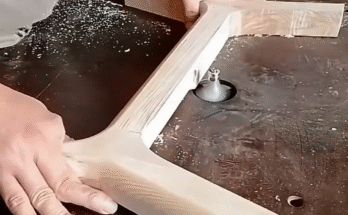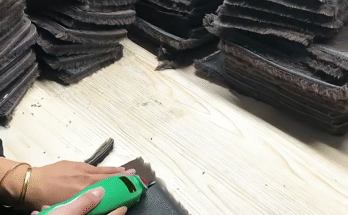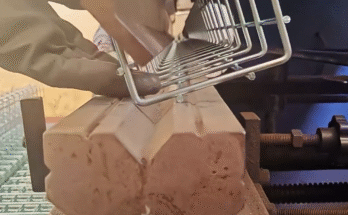Roof penetrations, especially around sewer pipes, are common culprits for leaks if not properly waterproofed. A robust waterproofing process ensures a watertight seal, protecting your home from water damage and extending the life of your roof. This guide outlines the critical steps involved in effectively waterproofing a roof sewer pipe.
Step 1: Thorough Inspection and Preparation of the Area 🔍
Before any waterproofing materials are applied, the area around the pipe must be meticulously prepared.
- Assess Existing Conditions: Inspect the existing flashing and roofing material around the sewer pipe. Look for any signs of wear, cracks, previous failed repairs, or loose debris.
- Clean the Surface: Thoroughly clean the roof surface and the pipe itself. Remove all dirt, dust, old sealant, loose granules, moss, algae, and any other contaminants. A wire brush can be useful for stubborn grime on the pipe. The surfaces must be completely dry before proceeding.
- Remove Old Materials: Carefully remove any old, deteriorated flashing, sealant, or mastic that is no longer effective. Use a utility knife or scraper for this. Be careful not to damage the underlying roof membrane or pipe.
- Repair Substrate: Ensure the roofing material immediately surrounding the pipe is sound and free of damage. Patch any holes or cracks in the roofing material if necessary, allowing patches to cure fully.
Step 2: Applying Primer (If Required) and First Layer of Sealant 🎨
Creating the initial bond and protective layer.
- Primer Application: If the waterproofing system or material requires a primer for optimal adhesion (common for liquid-applied membranes or certain sealants), apply it evenly to the pipe surface and the surrounding roof area according to the manufacturer’s instructions. Allow the primer to dry and cure completely.
- First Sealant Bead: Apply a generous bead of high-quality, flexible, and UV-resistant roofing sealant (e.g., polyurethane, silicone, or specialized roofing mastic) around the base of the sewer pipe where it meets the roof surface. Ensure this bead is continuous and creates a preliminary seal.
- Tool the Sealant: Use a putty knife or gloved finger to tool the sealant, pressing it firmly into the joint and ensuring good contact with both the pipe and the roof.
Step 3: Installing the Pipe Boot or Flashing 🛡️
This is the primary physical barrier against water intrusion.
- Select Appropriate Boot/Flashing: Choose a pipe boot or flashing designed for the specific type and size of the sewer pipe and compatible with your roofing material. Options include rubber pipe boots, lead flashing, or pre-formed metal flashing.
- Positioning: Slide the pipe boot or flashing over the sewer pipe, ensuring it sits snugly around the pipe and lies flat on the roof surface. The base of the boot/flashing should extend adequately onto the roof membrane.
- Securing the Base: Fasten the base of the pipe boot or flashing to the roof deck using roofing nails or screws, ensuring the fasteners are covered by the next layer of sealant or roofing material. For lead flashing, mold it tightly to the contours of the roof.
- Sealing the Top (for certain boots): For rubber pipe boots, the top portion often needs to be trimmed to fit tightly around the pipe. Apply a bead of sealant around the top edge of the boot where it meets the pipe, ensuring a watertight seal.
Step 4: Applying Reinforcement and Additional Layers of Sealant/Membrane 🧤
Building up the waterproofing system for durability.
- Reinforcing Fabric (Optional but Recommended): For enhanced durability and crack resistance, embed a reinforcing fabric (e.g., fiberglass mesh, polyester fabric) into a layer of liquid-applied waterproofing membrane or mastic. Apply a layer of the liquid membrane, lay the fabric into it while wet, and then apply another layer of the membrane over the fabric, ensuring it’s fully saturated and encapsulated.
- Additional Sealant Layers: Apply additional layers of the chosen sealant or liquid-applied membrane over the entire pipe boot/flashing and the surrounding roof area, extending beyond the base of the flashing. Build up the thickness gradually, ensuring uniform coverage.
- Feathering Edges: Feather the edges of the applied sealant or membrane smoothly into the existing roof surface to prevent water ponding and create a seamless transition.
Step 5: Granule/Coating Application (If Applicable) and Curing ✨
Protecting the waterproofing from UV and wear.
- Granule Broadcast (for asphalt-based systems): If working with asphalt-based liquid membranes, broadcast roofing granules (matching the existing roof color if desired) into the wet topcoat. This provides UV protection and a more aesthetically pleasing finish.
- Protective Coating (for other systems): For other types of liquid-applied membranes, apply a compatible protective topcoat or UV-resistant coating as specified by the manufacturer.
- Curing Time: Allow all applied materials to cure fully according to the manufacturer’s instructions. This is crucial for the waterproofing system to achieve its full strength and flexibility. Avoid disturbing the area during this period.
- Final Inspection: Once cured, perform a final visual inspection to ensure a complete, seamless, and durable waterproof seal around the sewer pipe. Check for any missed spots, bubbles, or cracks.
Step 6: Regular Maintenance and Monitoring ✅
Ensuring long-term performance.
- Periodic Checks: Routinely inspect the waterproofed area around the sewer pipe (at least twice a year, or after severe weather) for any signs of cracking, peeling, or deterioration.
- Prompt Repairs: Address any minor issues promptly with compatible sealant or repair materials to prevent small problems from escalating into major leaks.
- Keep Clear: Ensure the area around the pipe remains free of debris, leaves, or anything that could trap moisture.
By meticulously following these steps, you can create a highly effective and long-lasting waterproof seal around your roof sewer pipe, safeguarding your home from potential water damage.



